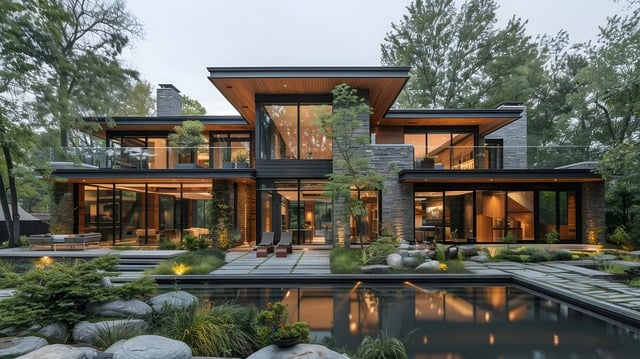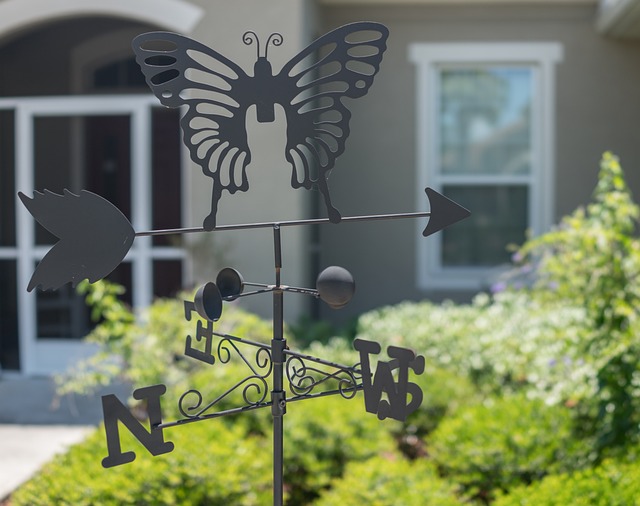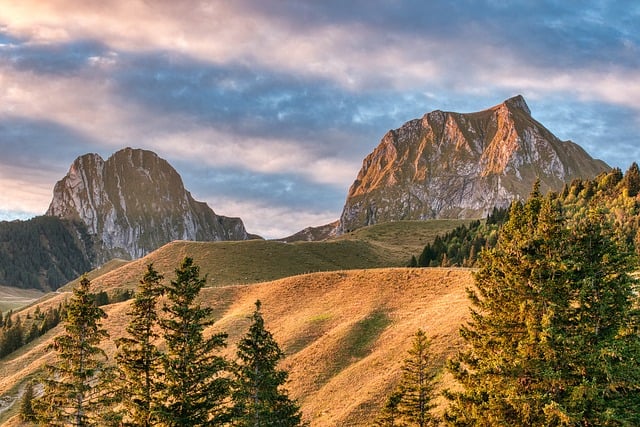This passage emphasizes the significance of customizing your garden's layout to suit the specific sunlight and water needs of different plants for a thriving outdoor space. It guides you to group similar plants together, simplifying maintenance and creating optimal growth conditions. The text also highlights the importance of considering regional climate and weather patterns when selecting plants, which contributes to the sustainability and resilience of your garden. It suggests incorporating raised beds for moisture-loving plants and xeriscaping for drought-resistant ones within modern landscape layouts. The discussion covers the benefits of DIY landscape planning for small yards, offering landscape blueprint ideas that are both aesthetically pleasing and resource efficient. It stresses that careful garden layout planning with these principles ensures a harmonious outdoor environment, enhancing your home's curb appeal while creating a sustainable and attractive garden setting, whether you're experienced or a beginner.
Crafting a thriving and efficient garden begins with understanding the unique sunlight and water requirements of each plant species. This article delves into the art of smart plant grouping, an essential practice for optimizing your outdoor space. By categorizing plants based on their sun and hydration preferences, you can create a harmonious landscape layout that promotes healthy growth while conserving resources. We’ll explore actionable landscaping design tips tailored to various climates and regions, emphasizing the importance of local plant selection for year-round vibrancy. Furthermore, we’ll guide you through modern landscape layout ideas that enhance both aesthetics and functionality in your backyard design layout, with practical examples to inspire your green oasis. For those with small yards, we’ll provide DIY landscape planning solutions that maximize space and create a cohesive outdoor space. Whether you’re an experienced gardener or just beginning, this article offers valuable insights for effective garden layout planning, turning your vision into a lush, sustainable reality.
- Optimizing Your Outdoor Space with Smart Plant Grouping for Sunlight and Water Needs
- – Discuss the importance of understanding sunlight and water needs for different plants.
- – Explain how to categorize plants based on these requirements.
Optimizing Your Outdoor Space with Smart Plant Grouping for Sunlight and Water Needs

When designing a garden or optimizing your outdoor space, understanding the specific sunlight and water needs of different plants is crucial for a thriving landscape. By grouping plants with similar requirements together in your landscape layout ideas, you can streamline maintenance tasks and ensure each plant receives the care it needs. For instance, plants that prefer full sun should be placed where they will receive six to eight hours of direct sunlight daily, while those requiring partial shade will thrive in areas that receive morning sunlight or dappled light throughout the day. Incorporating garden layout planning that takes into account your region’s climate and weather patterns can help you choose the right plants for your backyard design layout, leading to a more sustainable and resilient outdoor space.
Landscaping design tips often emphasize the importance of creating distinct zones or areas within your yard to cater to different plant needs. This approach not only improves the overall aesthetic but also facilitates efficient use of resources such as water. When planning your outdoor space, consider modern landscape layouts that include raised beds for moisture-loving plants near a water source, and xeriscaping for drought-resistant areas to minimize water usage. DIY landscape planning can be an enjoyable and cost-effective way to personalize small yard layout ideas, ensuring every square foot is maximized for function and beauty. By following landscape blueprint ideas that incorporate these principles, you can create a harmonious outdoor environment that is both visually appealing and low maintenance.

When embarking on garden layout planning, understanding your plants’ sunlight and water requirements is crucial for a thriving landscape. A well-planned backyard design layout considers the natural environment, ensuring that plants with similar needs are grouped together in your landscape blueprint ideas. This practice not only conserves resources but also promotes biodiversity within your outdoor space planning. Modern landscape layouts often incorporate this principle, creating a visually appealing and functional garden that requires less maintenance. For those who prefer a DIY approach to their landscaping design tips, consider small yard layout ideas that maximize the use of space while accommodating plants with compatible sunlight and water preferences. This thoughtful grouping not only simplifies care but also can transform a modest outdoor area into a serene retreat, enhancing the beauty of your property with minimal effort.
Incorporating landscape layout ideas into your garden planning is more than just aesthetic; it’s a strategic approach to optimizing your garden’s health and efficiency. By grouping plants that share similar water and sunlight needs, you minimize the need for constant monitoring and frequent adjustments in your outdoor space planning. This method is not only beneficial for maintaining a healthy garden but also allows for a more organized and manageable backyard design layout. Landscaping design tips often emphasize this principle, encouraging homeowners to create zones within their gardens that cater to specific plant needs. With the right landscape blueprint ideas, you can achieve a harmonious balance between form and function, ensuring your garden thrives throughout the seasons. Embracing these modern landscape layouts will not only elevate the curb appeal of your home but also provide you with an outdoor sanctuary that’s both beautiful and sustainable.
– Discuss the importance of understanding sunlight and water needs for different plants.

When crafting a thriving garden or designing a lush backyard, understanding the specific sunlight and water needs of different plants is paramount. Proper landscape layout ideas should consider the microclimates within your outdoor space, ensuring that each plant receives the appropriate amount of sunlight and moisture to flourish. Garden layout planning that takes into account these variables can prevent the pitfalls of under- or over-watering, which are common issues that can stunt plant growth or lead to their demise. By integrating backyard design layouts that group plants with similar requirements, you create a sustainable and low-maintenance environment, a key aspect of landscaping design tips for any size yard. This thoughtful approach to outdoor space planning not only promotes the health and vibrancy of your plants but also saves time, resources, and enhances the overall aesthetic of your modern landscape layouts.
For those embarking on DIY landscape planning, particularly in small yard layout ideas, the concept of a landscape blueprint becomes even more crucial. A well-planned design can maximize the use of space and light, while also ensuring that each plant is placed where it will thrive. Such careful consideration during the planning stage can transform a modest outdoor area into a functional and beautiful extension of your living space, allowing you to enjoy the full potential of your garden throughout the seasons. Whether you’re an experienced gardener or just starting out, understanding these fundamentals is essential for successful landscape layout ideas and garden design planning, ensuring that every plant has what it needs to contribute to the beauty and serenity of your backyard oasis.
– Explain how to categorize plants based on these requirements.

When designing a garden or planning a backyard layout, categorizing plants according to their sunlight and water needs is crucial for a thriving landscape. Begin by observing your outdoor space to identify areas that receive full sun, partial shade, or complete shade throughout the day. This information will help you group plants with similar light requirements, which is one of the key elements in effective garden layout planning. For instance, plants that thrive in full sun, such as lavender and rosemary, should be placed where they’ll receive ample sunlight for most of the day. Similarly, water-wise plants like succulents and drought-resistant grasses belong together as they share low-water needs. This approach not only simplifies maintenance but also contributes to a cohesive look in your landscape layout ideas.
Incorporating landscaping design tips tailored to your region’s climate will enhance the success of your garden. For example, if you live in an area with limited rainfall, grouping xeriscape plants together can create a low-maintenance, modern landscape layout that requires less water and upkeep. DIY landscape planning can be facilitated by using landscape blueprint ideas as a guide. These blueprints can help visualize the plant groupings within your small yard layout ideas, ensuring that each area of your yard is optimized for the plants you choose to include. By following these strategies, you’ll achieve a well-planned outdoor space that is both aesthetically pleasing and environmentally sustainable.
In conclusion, thoughtful plant grouping is a key aspect of successful landscape and garden design. By categorizing plants according to their sunlight and water requirements, homeowners can enhance the aesthetics and functionality of their outdoor spaces. Utilizing landscape layout ideas and garden layout planning ensures that each plant thrives, leading to a vibrant, healthy environment. Backyard design layouts can be optimized through careful consideration of these factors, making the most of modern landscape layouts. For those who prefer a hands-on approach, DIY landscape planning offers an opportunity to tailor your garden to your specific needs and preferences. Even in small yards, with the right blueprint ideas, you can create a harmonious and efficient layout that maximizes space and beauty. Whether you’re a seasoned gardener or just starting out, these landscaping design tips will aid in transforming your outdoor space into a tranquil retreat or an impressive display, complementing your home and lifestyle.
